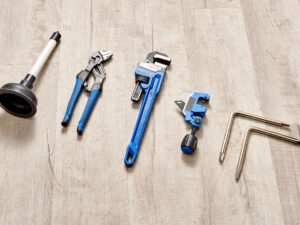Plumbing is the science of conveying fluids through pipes and other plumbing fixtures for a variety of applications. Its tools include pipes, valves, tanks, and other apparatuses. The process is very varied, but it all involves using water and sanitary drainage. In addition, plumbing technicians use various tools and techniques to solve plumbing problems.
The plumbing system provides clean and safe water to our homes and transports wastewater from our homes. It is an important part of our homes, and having some knowledge about it can help us make wise decisions and avoid problems. It is comprised of a number of different components. These components are divided into three basic categories: water supply, water heating, and drainage. If you live in a developed community, you probably use city water.
Using water-saving devices is an effective way to reduce water consumption in the home or office. There are several ways to achieve this. One way is by limiting the pressure in the water distribution system. The pressure should not exceed 80 psi or about 55 m of the water column. This will reduce water hammer and protect appliances and valves. Another method is to use a Reducing Pressure Valve.
Another way to keep your water clean is to check for cross-connections. Cross connections are connections between a plumbing system and another source of water. This can result in backflow and can contaminate drinking water. Common contaminants include detergents, pesticides, and sewage. You should always check for this before using a plumbing system.
When installing a plumbing system, you should make sure to choose a plumber who is licensed by the State Board of Plumbing and Drainage. State laws require that plumbing contractors have a state license. Choosing a plumber who is licensed in your state is crucial for water quality protection. If you’re not sure about the licensed plumber, look for another professional.
If your property has a sanitary drainage system, it’s important to maintain it properly. Sanitary drainage is the system for flushing and directing wastewater from your home or building to the municipal wastewater plant. The municipal public works department is responsible for maintaining the section between your property line and the public sewer collection system. Once wastewater from your home or building enters the system, it is sent to the treatment facility, where it is treated and released back into the waterways.
The sanitary drainage system in a building consists of a series of pipes. These pipes are used to transport wastewater from plumbing fixtures and other equipment to an approved disposal site. In some cases, the sanitary drainage system will be connected to a storm drain, which carries excess water away from a house.
The pipes used in sanitary drainage systems must be at least 6 inches in diameter to ensure proper drainage of wastewater. They are usually made of cast iron or vitrified clay. In some cases, lead is also used. The sanitary drainage pipe should be sized to flow approximately half full, and the pipe should also have a proper scouring action to prevent solids from building up in the pipe.
In some cases, sanitary drainage pipes must be installed at the appropriate height to allow the installation of a food waste disposer. In other cases, sanitary drainage fittings must be installed at the appropriate height to allow for this. In addition, the end clean-out fitting must be the same size as the drain to which it connects. If this is not feasible, a two-piece trap may be used instead.
Sanitary drainage is important in preventing sewer overflow. Overflows in sanitary drainage systems can be costly because they require treatment facilities to process excess water. Furthermore, they are very difficult to deal with and are often not designed for overload.